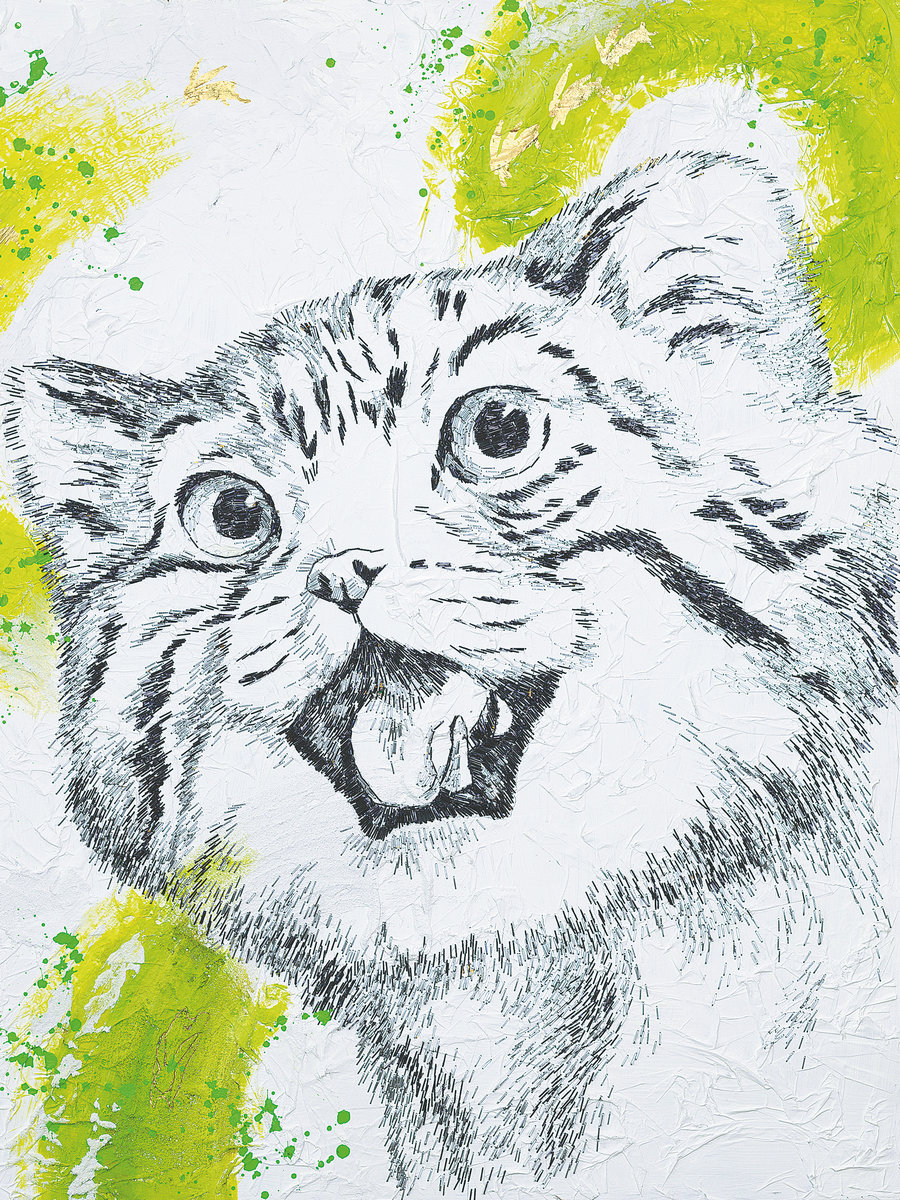

When creating the jungle cat, Qing added some reeds to the art panel in a circle behind the cat to show its living environment, because the animal is usually found in swampy areas.
As for the wildcat, staples were applied in varying density to show the shades of fur under light, before the depth was fine-tuned with a hammer.
Qing has also learned about many felines through her project, such as how the manul can camouflage itself to look like a stone by lying flat on the ground, how the toes of fishing cats are connected and how a Chinese mountain cat has beguiling blue eyes.
Qing's predisposition toward nature developed during her childhood. Growing up in the suburban Mentougou district of Beijing, Qing lived near the hills, which enabled her to observe the rich flora and fauna on her doorstep. She took to Chinese painting when she reached school age, and later studied traditional flower-and-bird painting.
"Our teacher often took us to the parks to paint peonies and to the zoos to paint animals, and I found such experiences quite interesting," she recalls.
One of her happiest hours was doing her home assignment of painting plants found in her neighborhood.
"Since then, I have developed the habit of observing animals and plants around me, which has helped me in my later creation," Qing says.
Although she didn't follow through with her childhood interest after she pursued Chinese language and literature in college, before working at various facilities, including a Confucius Institute and a museum, in 2014, painting found a way back into her life when she became pregnant.
"I wanted to make a souvenir by hand for my baby," she says.
Thinking of her previous passion, Qing settled on drawing a booklet. From then on, she embarked on the path of becoming an artist. She first searched for tutoring information online to hone her skills, while figuring out what to draw and how to tap into the potential of various painting materials. It didn't take long before she established herself as a wildlife artist.
"I'd like to think of my work as scientific painting," Qing says, adding that it has to pursue artistic beauty, while strictly following the rules of science.
In 2017, Qing studied under the tutelage of Zeng Xiaolian, an expert on drawing plants at the Kunming Institute of Botany, Chinese Academy of Sciences.
Zeng's interest in the integration of science and art inspired Qing.
In recent years, Qing's works have made their way to various exhibitions, including the 19th International Botanical Congress in Shenzhen in 2017, and the Ultimate Hand-Drawing Exhibition on Arts of Nature and Science in Beijing the same year. In 2019, she recorded 32 rare species of wild butterflies through art, and her work features images of different species of butterflies in natural settings. It was published earlier this year.
Using the staple gun to paint felines was an inspiration she drew from a Russian artist. "I often go online to see what new ideas artists are working with," she says.
While the Russian artist created giraffes and elephants from Africa and bears from Russia, Qing thought of using the form to depict animals from China. She implemented the idea after receiving approval from Zeng, who, she says also encouraged her to try various approaches of artistic creation.
Qing focused on felines because she found that people around her didn't know much about them. After searching for information and consulting experts, Qing started her project. "I think we should learn more about them, and do something more for them," she says.
Qing wants to produce works that not just showcase the beauty of nature, but inspire people to think of how to exist alongside nature and to better protect it.